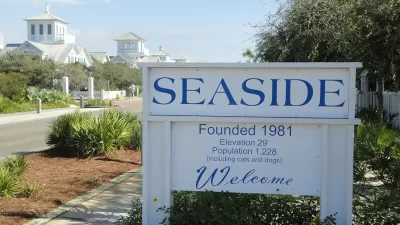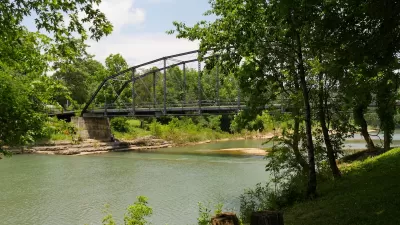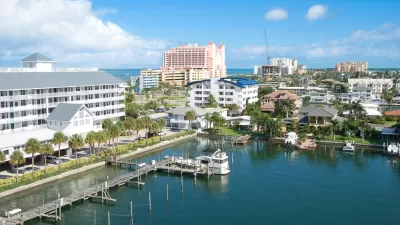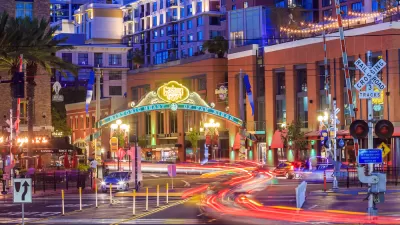Robert Steuteville discusses the slow, phased emergence of the New Urbanism. We are only partway through a change that will take generations. We are now immersed in the revitalization of cities. More phases will come.

The New Urbanism began mostly as a large-project, greenfield movement. Some new urbanists concentrated on infill in the 1980s and 1990s, but their efforts attracted less media attention and investment.
Intellectually, the movement aspired to revitalize entire regions—especially historic cities and towns, which were, after all, the inspiration for a return to walkable places. However, 30 years ago most cities were in deep trouble, so just about every large developer focused instead on the suburbs. New urbanists looked at the damage inflicted by sprawl and fervently sought to reform the system.
That is what I call the first phase of New Urbanism, in which traditional neighborhoods developments (TNDs), inspired by historic neighborhoods, were built as alternatives to conventional masterplanned communities. TNDs like Seaside, Kentlands, Orenco Station, New Town at St. Charles, Habersham, and Celebration represent this era well; they showed themselves to be laboratories of ideas. These were private-sector projects that created pockets of urban place by overcoming legal and institutional barriers to compact development.
That phase lasted right up to the housing crash in 2008. Developers proved that mixed-use neighborhoods, with main streets and centers, could be built and that the public would buy into them. Long-neglected building types were reintroduced into many American markets: Among them were shopfront houses, small apartment buildings, granny flats, courtyard housing, liner and flex buildings, various mixed-use buildings, and small-lot single houses with usable porches and rear garages...
[Read more at the link below]
FULL STORY: The four phases of New Urbanism

Maui's Vacation Rental Debate Turns Ugly
Verbal attacks, misinformation campaigns and fistfights plague a high-stakes debate to convert thousands of vacation rentals into long-term housing.

Planetizen Federal Action Tracker
A weekly monitor of how Trump’s orders and actions are impacting planners and planning in America.

San Francisco Suspends Traffic Calming Amidst Record Deaths
Citing “a challenging fiscal landscape,” the city will cease the program on the heels of 42 traffic deaths, including 24 pedestrians.

Defunct Pittsburgh Power Plant to Become Residential Tower
A decommissioned steam heat plant will be redeveloped into almost 100 affordable housing units.

Trump Prompts Restructuring of Transportation Research Board in “Unprecedented Overreach”
The TRB has eliminated more than half of its committees including those focused on climate, equity, and cities.

Amtrak Rolls Out New Orleans to Alabama “Mardi Gras” Train
The new service will operate morning and evening departures between Mobile and New Orleans.
Urban Design for Planners 1: Software Tools
This six-course series explores essential urban design concepts using open source software and equips planners with the tools they need to participate fully in the urban design process.
Planning for Universal Design
Learn the tools for implementing Universal Design in planning regulations.
Heyer Gruel & Associates PA
JM Goldson LLC
Custer County Colorado
City of Camden Redevelopment Agency
City of Astoria
Transportation Research & Education Center (TREC) at Portland State University
Jefferson Parish Government
Camden Redevelopment Agency
City of Claremont





























